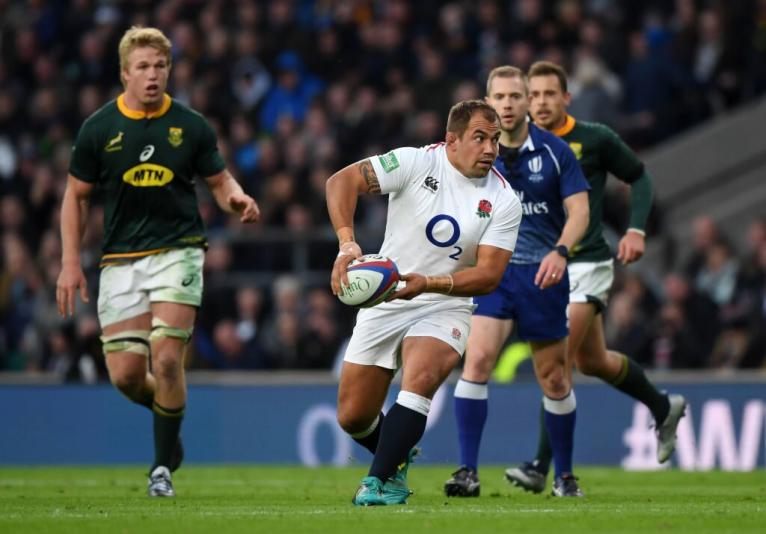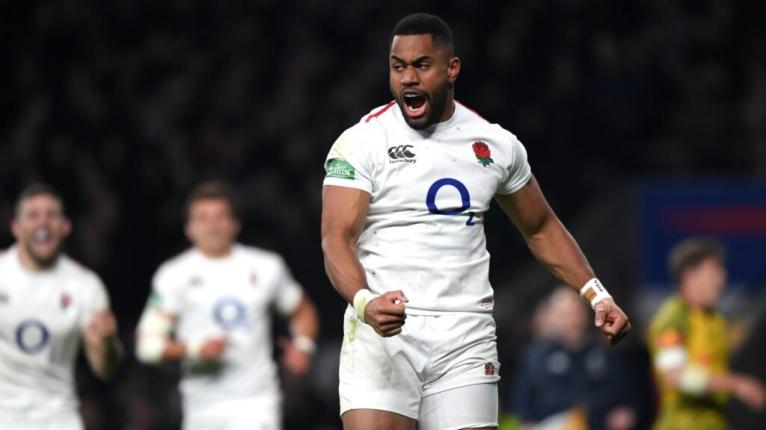Ten months out - England's potential 31-man RWC squad

With 2019 now fast-approaching, the northern hemisphere season is, more or less, at its midway point.
The Gallagher Premiership will be halfway through the regular season come the conclusion of this weekend’s matches, there are two rounds of pool play left in the European competitions and we have already had one of the two international windows during the season.
It seems an appropriate time to take stock of England’s options, work out how many of Eddie Jones’ 31-man Rugby World Cup squad are already inked in and what the ongoing battles are for the remaining spots in the team.
Back in November, Jones said that there are about 35 players in contention for his RWC squad, which would suggest he is pretty close to finalising the 31-man contingent, but it’s always wise to take what Jones says publicly in the media with a pinch or two of salt.
As for the certainties to be in the squad, these would seem to be the players already being handed their tickets to Japan, fitness-permitting.
Forwards (12)
Mako Vunipola, Jamie George, Dylan Hartley, Kyle Sinckler, Harry Williams; Maro Itoje, George Kruis, Courtney Lawes, Joe Launchbury; Sam Underhill, Billy Vunipola, Nathan Hughes.
Backs (10)
Ben Youngs, Owen Farrell, George Ford; Ben Te’o, Henry Slade, Manu Tuilagi; Jonny May, Elliot Daly, Anthony Watson, Jack Nowell.
Assuming they are all fit, these 22 have been regularly utilised by Jones over the last couple of years and/or they are players he has shown favour to by selecting them immediately after injuries or suspensions.
This would leave nine spots up for grabs, with some impressive performances from new faces in November, and much will depend on how Jones chooses, in terms of positions, to allocate the space in the squad.
For example, Itoje and Lawes both also cover six, potentially allowing the Australian to go a bit lighter in the back row, whilst he has also shown a tendency during his time with England to settle for just two designated scrum-halves in a squad. It’s a risk in an attritional tournament like a RWC, but Jones is not adverse to taking calculated risks.
Here are some of the key position battles still to be fought, with a chance of glory at the RWC the golden ticket at the end of the season.
Vunipola’s deputy
The international retirement of Joe Marler has thrown this wide open this season and Ben Moon (RPI – 86) took his opportunity well in the autumn. Ellis Genge (72) is fit again and will come into the mix in the Six Nations and Alec Hepburn (80) has found his form with Exeter Chiefs, but it is unlikely Beno Obano (57) will return to fitness in time to make a claim for the role.

England are very unlikely to carry just four props, either, so whoever wins out for the job to deputise for Vunipola could well be joined by one of his rivals on the plane. Dan Cole will offer up competition to be the fifth prop, too, and though six props is not out of the question, Jones only opted to take four to South Africa in the summer, for what is a fairly rigorous test of durability in itself.
The third hooker
A position where England would be very unwise to mess with convention and take less than three options. George and Hartley are already inked in, leaving a four-way fight between Luke Cowan-Dickie (88), Jack Singleton (62), Tom Dunn (65) and Tommy Taylor (79) for the final berth.
If Cowan-Dickie plays as he did against Saracens last weekend for the remainder of the season, it’s his job to lose, especially with Singleton having his struggles at the lineout with Worcester Warriors and Taylor not quite hitting the heights with Wasps that he once enjoyed with Sale Sharks. Dunn is the epitome of consistency and work rate at Bath, so he could yet offer a challenge to Cowan-Dickie.
Back row battle
The back row is still arguably England’s most in-flux position group.
Mark Wilson (70) stole a march on his rivals with an excellent autumn international series in the absence of the injured Chris Robshaw (71), but the Harlequin is held in very high regard by Jones and could return to his spot on the blindside come the Six Nations. Brad Shields (71) is already establishing himself as one of Jones’ favourites, whilst Tom Curry (64) has been unlucky that injuries have wiped out or prematurely ended two international windows for him in recent seasons, but if fit, he always seems to be in the mix under Jones now.
The key questions here seem to be will Jones take Curry as well as Underhill, especially with both being relatively inexperienced players? Or, does the ability of Itoje and Lawes to also cover six mean that the Australian can go with just one designated six, in Wilson, Robshaw or Shields, and then accommodate both Curry and Underhill?
Wilson’s ability to cover eight is handy, but if Vunipola and Hughes are both fit, Jones has shown no tendency to veer away from those two options at the base of the scrum.
Two or three at scrum-half?
Jones has had a tendency to go with just two scrum-halves during his tenure. That’s what he did on the tours to Australia and Argentina and although he took three to South Africa in the summer, he proceeded to use Youngs for the bulk of the work, with Ben Spencer (90) getting just 13 minutes off the bench and Dan Robson remaining unused.
The competition to back up Youngs will, it seems, be fought between Danny Care (69), who has done well in that role for the majority of Jones’ stewardship, Richard Wigglesworth (89), who has come into favour more recently, and Spencer, who has regularly been around the training squads, but with limited opportunities in games. At least one will travel with Youngs, but could Jones opt for more security in the short turnarounds of a RWC and take two of them?
Cipriani vs Joseph vs Lozowski vs Cokanasiga
Let’s assume, for a second, that Jones opts on the side of caution and takes three hookers and three scrum-halves. It will start to limit the number of midfield and outside back options he can carry, but it’s not the end of the world, with one of the real strengths of this England side being its versatility, with players capable of playing multiple positions to a high standard.
That may hurt Alex Lozowski’s (84) case, who is a versatile player himself, whilst Danny Cipriani (72) will have to do something very special to unseat Farrell and Ford, especially with Slade also capable of covering 10 and one of the players we believe is a certainty in Jones’ eyes.
Joe Cokanasiga (68) was excellent in the autumn and gives England an ability to break the gain-line with power and keep phases alive that they don’t currently have in their other back three options, whilst Jonathan Joseph (68) is a specialist 13 and potentially a bit of a luxury, with Slade, Tuilagi, Nowell and Daly all in the squad. That said, Joseph is ruthless with any kind of front-foot ball and his defensive work is at least the equal of those four options.

These are some nice problems for Jones to have and we have taken a stab below at what his final 31-man squad may look like.
Forwards (17)
Mako Vunipola, Ben Moon, Ellis Genge, Jamie George, Dylan Hartley, Luke Cowan-Dickie, Kyle Sinckler, Harry Williams; Maro Itoje, George Kruis, Courtney Lawes, Joe Launchbury; Chris Robshaw, Mark Wilson, Sam Underhill, Billy Vunipola, Nathan Hughes.
Backs (14)
Ben Youngs, Danny Care, Richard Wigglesworth, Owen Farrell, George Ford; Ben Te’o, Henry Slade, Manu Tuilagi, Jonathan Joseph; Jonny May, Elliot Daly, Anthony Watson, Jack Nowell, Joe Cokanasiga.
It is heavy on options in the midfield and back three and it would not be surprising if one of those players were sacrificed in order to take a third tighthead (Cole) or an extra back rower (Curry or Shields), but this group would allow Jones a fair amount of flexibility in order to meet the challenges that France, Argentina, the United States and Tonga all pose.
Watch: The Rugby Pod boys discuss players wanting to be paid more.












































